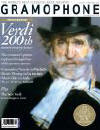Texte paru dans: / Appeared in:
*

GRAMOPHONE (02/2013)
Pour s'abonner /
Subscription information
CPO
CPO777550

Code-barres / Barcode : 0761203755028
Consultez toutes les évaluations recensées pour ce cd
~~~~ Reach all the evaluations located for this CD
Reviewer: Duncan Druce
A new group for Telemann’s
characteristic concertos
For the fifth volume of Telemann’s violin concertos, Elizabeth Wallfisch
uses a different orchestra from the one on Vol 4 (A/12). The slightly larger
string hand makes a particularly satisfying, well-blended sound.
The seven works recorded here, none of them longer than 10 minutes, date from the earlier part of Telemann’s career — before 1716 — and demonstrate the extent to which he was a pioneer of the solo concerto in Germany. Rather than follow Vivaldi’s three-movement form, Telemann favours a four-movement design, the initial adagio or grave having in most cases a striking cantabile quality. He doesn’t exploit the violin’s higher register but is adept at designing varied violinistic figurations. Some of the quick movements sound Vivaldian, with ritornellos featuring contrasting motifs; others are based, in a more informal way, on a single thematic idea. The finale of the E minor two violin concerto differentiates solo and tutti in unusual way, with the orchestra in 12/8 time and the soloist in 4/4. Perhaps the pick ofthe concertos is the one in the rare key of F sharp minor — its slow movements especially eloquent, the fast ones full of strength and an energy. But each of the concertos has its particular individuality.
Wallfisch and her band bring out most effectively the character of each movement without ever appearing to be straining to make an effect; the interpretations are entirey natural and full of vitality. We’re continually aware of being in the presence of a remarkably clever, imaginative composer.
Cliquez l'un ou l'autre
bouton pour découvrir bien d'autres critiques de CD
Click either button for many other reviews


